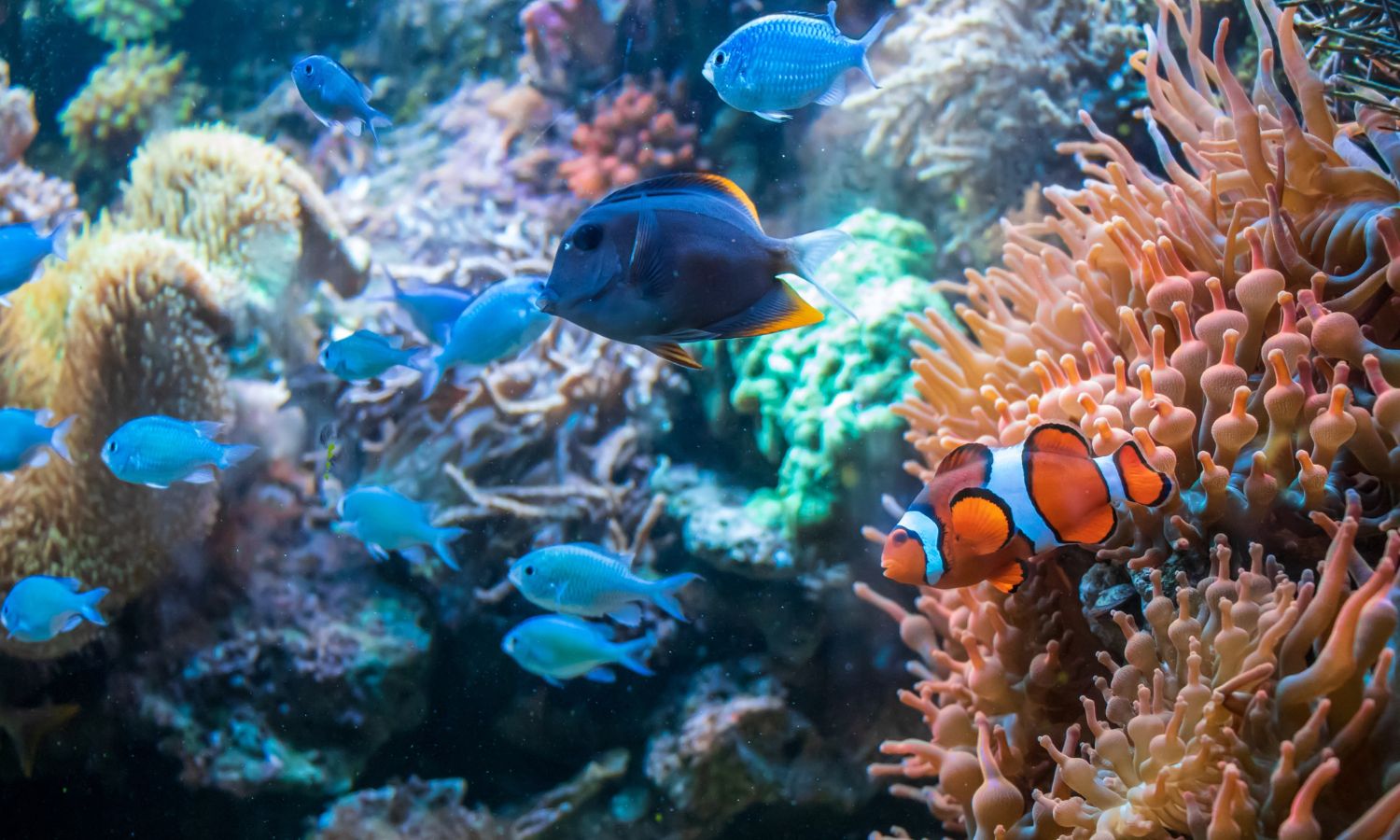Welcome, young explorers! Today, we are embarking on an exciting underwater journey to discover fascinating facts about animals in the ocean. From the different types of oceans to the most popular ocean animals, we’ll dive deep into the wonders beneath the waves.
The Big Blue Playground
Our planet has not one, but five different types of oceans: the Pacific, Atlantic, Indian, Southern, and Arctic Oceans. Each ocean is like a gigantic playground for a variety of incredible creatures.
Let’s explore the five different types of oceans :
Pacific Ocean
The Pacific Ocean is the largest of all oceans. It’s like Earth’s giant swimming pool, stretching from the Arctic in the north to the Antarctic in the south. Many amazing creatures call the Pacific home, from playful dolphins to mighty whales.
Atlantic Ocean
The Atlantic Ocean is like a massive, watery highway connecting the Americas, Europe, and Africa. It’s a busy place where ships sail, and ocean currents dance. Fishermen catch tasty fish, and seabirds soar above the waves.
Indian Ocean
The Indian Ocean is like a warm, tropical paradise surrounded by land. It’s known for its beautiful coral reefs and diverse marine life. From colorful fish to graceful turtles, the Indian Ocean is a bustling underwater neighborhood.
Southern Ocean
The Southern Ocean surrounds Antarctica like a freezing, icy moat. It’s the youngest of the oceans and is home to resilient creatures adapted to the extreme cold. Penguins waddle on icy shores, and seals slide through the chilly waters.
Arctic Ocean
The Arctic Ocean is like the frosty crown of our planet, covered in ice and surrounded by Arctic lands. It’s a cold, icy playground for polar bears, seals, and whales. In winter, the sea ice expands, creating a frozen world of wonder.
Ocean Animal Adaptations
Ocean animals have amazing features that help them survive in their watery homes. From fish with gills for breathing to squishy creatures with suction cups, these adaptations are like nature’s toolbox, giving sea animals the tools they need to thrive beneath the waves. Let’s dive in and explore the fascinating ways these creatures have evolved to overcome the challenges of the ocean!
Gills for Breathing
Fish have special breathing organs called gills that help them extract oxygen from water. They’re like underwater lungs, allowing fish to “breathe” and survive in their aquatic homes.
Webbed Feet
Ducks and some seabirds have webbed feet, which act like paddles. This adaptation helps them swim efficiently in the water, making it easier to catch fish or escape from predators.
Suction Cups
Octopuses and squids use suction cups on their tentacles for various tasks. These cups help them grip onto prey, navigate through the ocean, and even open jars, showcasing their clever adaptations.
Slippery Bodies
Eels and lampreys have slimy and slippery bodies that make it challenging for predators to grab onto them. This adaptation acts as a protective layer, allowing them to escape from potential threats.
Hibernation
Some marine animals, like certain turtles and seals, go into a form of hibernation to conserve energy during cold winter months. This helps them survive when food is scarce and conditions are harsh.
Transparent Bodies
Transparent or translucent sea creatures, such as jellyfish and certain types of shrimp, use their see-through bodies as a form of camouflage. This adaptation helps them blend into the water, making them less visible to predators and prey alike.
Electric Fields
Some fish, like electric eels and rays, can generate electric fields. They use this ability for navigation, communication, and even to stun prey. It’s like having a built-in electric superpower!
Buoyancy Bladders
Many fish have a gas-filled organ called a buoyancy bladder that helps them control their depth in the water. By adjusting the amount of gas in the bladder, they can stay at the right level in the ocean without sinking or floating.
Thick Blubber
Marine mammals, such as whales and seals, have a thick layer of blubber beneath their skin. This fat layer acts as insulation, keeping them warm in cold waters and providing energy during long swims.
Regrowing Limbs
Sea stars, also known as starfish, have the remarkable ability to regrow lost arms. If a sea star loses an arm due to a predator or injury, it can regenerate a new one over time, allowing it to continue its ocean adventures.
Top 10 Ocean Animals
There are countless types of sea animals, from tiny snails to enormous whales. The ocean is a diverse habitat with a variety of marine life.
Sharks
Sharks are the kings of the sea, with their sharp teeth and sleek bodies. They come in different shapes and sizes, making them the ocean’s top predators.
Pufferfish
The pufferfish may be small, but it is considered one of the smallest deadliest sea creatures. When threatened, it puffs up to scare away predators.Pufferfish are like the underwater balloons of the sea. When they feel threatened, they puff up to scare away potential predators.
Angelfish
The angelfish is a unique sea animal with its vibrant colors and intricate patterns, making it look like a living work of art.These colorful fish have striking patterns on their bodies, almost like they’re wearing a beautiful costume.
Manta Rays
With their wingspan that can reach up to 25 feet, manta rays are the graceful giants of the ocean. They glide through the water with elegance.
Snails
Snails in the ocean are not your typical garden snails. They have shells that come in all shapes and sizes, providing a cozy home on the ocean floor.
Clams
Clams are like the treasure chests of the ocean. They hide precious pearls inside their shells, making them a real gem!
Oysters
Oysters may not be great swimmers, but they play a crucial role in keeping the ocean clean by filtering water. They’re the ocean’s natural cleaners!
Crabs
Crabs are the funny walkers of the ocean floor, with their sideways scuttling. Some even have vibrant colors that make them stand out in the crowd.
Whales
Whales are the gentle giants of the ocean. They are mammals, just like us, and some can sing beautiful songs to communicate with each other.
Dolphins
Dolphins are the ocean’s acrobats, leaping and twirling through the water. They are intelligent and love to play, making them the friendly entertainers of the sea.Dolphins are often considered the nicest animals in the ocean.
At 12,000 feet deep in the ocean, you might also find incredible creatures like the gulper eel, lanternfish, and giant squid. These deep-sea dwellers have adapted to the extreme conditions of the abyss.
So there you have it, young ocean explorers! The ocean is teeming with incredible life, from the powerful sharks to the graceful dolphins. As you continue to learn about facts about animals in the ocean, remember that this vast underwater world is filled with wonders waiting to be discovered. Dive in and enjoy the adventure!

